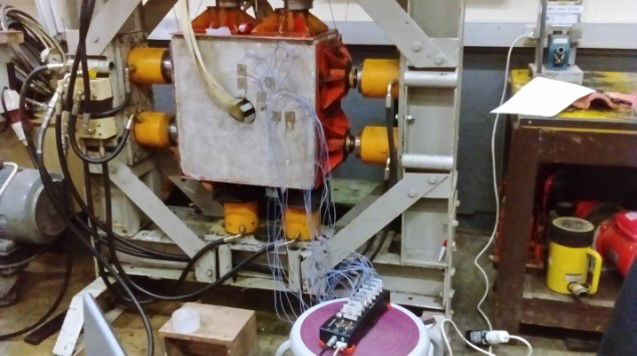Study of Displacement Distribution Around Circular Opening Affected by Presence of Discontinuities Using Laboratory Biaxial Test

Displacement of the opening could be affected by applied stress conditions (k, is ratio between the horizontal stress to the vertical stress), the presence of discontinuity around opening, and also properties of both rock and joint. The displacement of the opening affected by presence of discontinuities could not be estimated analytically. Therefore biaxial test could be used to study the distribution of displacement around the opening with the approach of physical models and numerical models. Physical models were made of a mixture of cement and sand, with dimension of 45 cm x 45 cm, radius circular opening of 4.5 cm, thickness of 30 cm, and persistence of discontinuities of 25 cm. Whereas the numerical models was using finite element 3D method and utilizing the Rocscience 3 software (by Rocscience). Opening models were made, among others: opening without discontinuity, opening with dip discontinuities 0°, opening with dip discontinuities 90°, and opening with dip discontinuities 45°. Biaxial test performed by applying a stress to the model in the horizontal and vertical direction to reach the plane strain condition. Stress conditions applied varies in k = 1/2, k = 1, and k = 2, with vertical stress σv = 0.84 MPa. The displacements were measured at wall opening (1R) using dial gauge (accuracy 1 μm) and around the opening (2R and 3R) using strain gauge (accuracy 0.01 μm). Displacement measurement results were compared with the results of numerical modeling. Overall, the great displacement occurred at the wall of opening, with stress condition k = 2. In this research, the filling material of joint strengthen the opening models. However, numerical model could not yet explain the physical model, so further studies need to be done.

